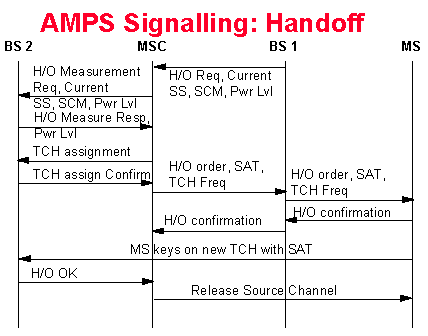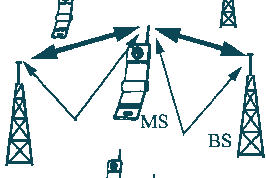
Handover
When a mobile terminal moves outside the coverage area of its base station, the network management is assumed to take appropriate measures. A 'handover' or 'handoff' to another base station is required to ensure sufficient quality of reception, including acceptable interference power levels. A mobile user experiences the worst link quality if the terminal is located at the boundary of two cells where the distances to base stations are maximum.
Different strategies for handover exist:
- Centralised methods, as for instance used in GSM.
- Decentralized methods, as for instance used in DECT.
Handovers are mostly made to improve the received signal power or the C/I ratio of a particular link,
but can also be made to free spectrum resources in one cell
if that cell becomes fully loaded with traffic. In such case handovers become part of the dynamic frequency assignment (DCA) scheme.
|
|

Start page of video from Short Course
by BMRC
Video from Wireless Communications Networks Short Course
"Let's consider the area covered by a particular base station and users are
driving around in this area. At a certain point in time they will get closer to other base
stations or at least drive out of the coverage area of on cell. It is important that you choose the right
point and moment where you hand the user over to another cell.
...... "
|

Embedded QuickTime Video
| | |
Handover in AMPS

 p.39
p.39
Protocol for handover in the US AMPS system.
Source: Randy Katz.
The base station takes the initiative by sending a request to the Mobile Switch Center (MSC).
The MSC asks several base stations to do measurements. Based on the results the MSC decides to which base station the handoff will be made.

| Soft Handover in IS95
Some (CDMA) systems use Soft handover:
during a certain period a terminal can maintain a radio link to two base stations simultaneously.
|









 p.39
p.39